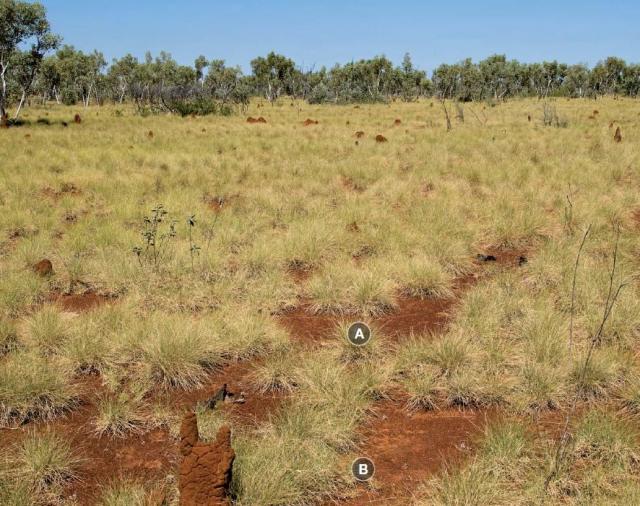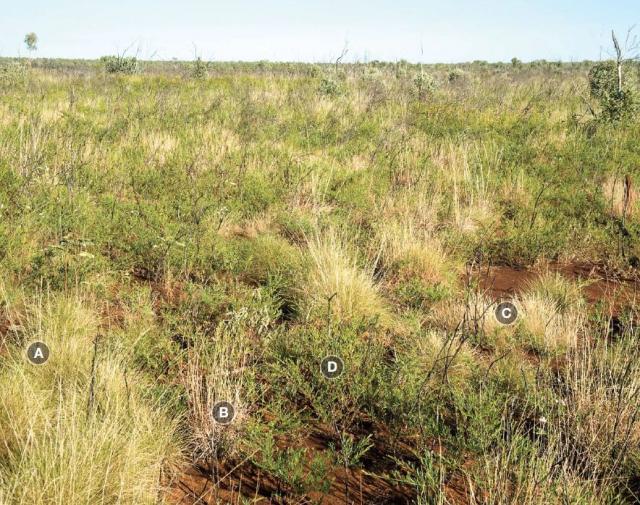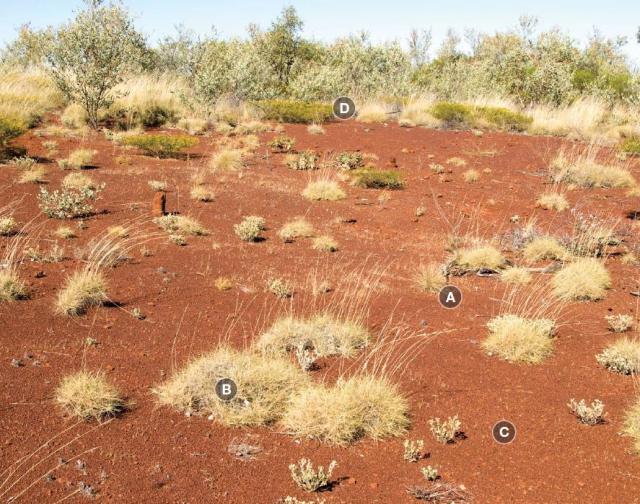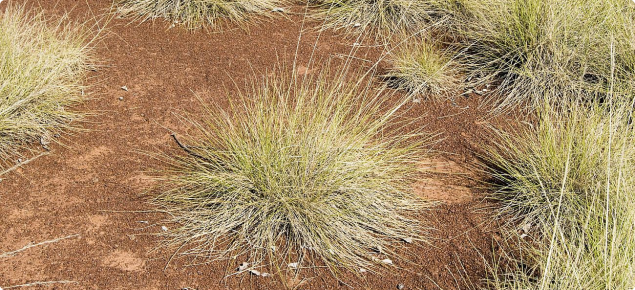Soft spinifex pastures
These pastures are part of the Kimberley red soil group – spinifex pastures, and soft spinifex is the identifier grass. Use the interactive key to pasture condition to help identify pasture type.
Pastoral value
Soft spinifex pastures are of moderate grazing value under low stocking rates when in good condition. Soft spinifex pastures are the most useful of the spinifex pastures, and are also regarded as a useful drought reserve. Heavy grazing, or grazing too soon after fire, can remove the soft spinifex plants and cause condition decline.
Turpentine bush and other acacias may increase after fire, making it difficult for livestock to access the grass. Late-season burning on a 4– to 6–yearly rotation is considered to be good practice because it allows new seedlings to establish. The country should be spelled after burning until the grass seed has dropped.
Occurrence
Soft spinifex pastures are hummock grasslands with scattered trees and acacia shrubs. They occur on level to gently undulating plains, and occasionally hills, throughout the Kimberley. Soils are usually well-drained sands and loams, and are sometimes rocky.
Pasture condition
Good: The dominant grass is soft spinifex when this pasture type is in good condition. Other perennial grasses, including ribbon grass, silky browntop, curly spinifex and woollybutt grass, may occur in low numbers among the spinifex.
Annual grasses, such as limestone grass, may also be present. Plants are vigorous, productive and evenly spaced. The size and density of plants in the stand depends on the length of time since fire, seasonal conditions, grazing pressure and time of year (Figure 1).

Fair: As pasture condition declines from good to fair, less-desirable species, such as threeawns and wire grass, become more prominent, though soft spinifex is still dominant. Soft spinifex plants may be less vigorous and other desirable species are hard to find. Turpentine bush and other acacias may increase, making it difficult for livestock to access the grass (Figure 2).

Poor: Soft spinifex pasture that has declined to poor condition will most likely be dominated by the undesirable species, threeawns, and wire grass, an intermediate species. There may be thick turpentine bush, making it difficult for livestock to access the grass, and bare areas may have increased. Where soft spinifex pasture in poor condition is adjacent to hard spinifex pastures, bare areas may be colonised by hard spinifex (Figure 3).

Associated plants
| Common name (link to DPIRD species page) | Scientific name (link to FloraBase) | Life form |
|---|---|---|
| Desirable species | ||
| perennial grass | ||
| perennial grass | ||
| perennial grass | ||
| Intermediate species | ||
| perennial grass | ||
| perennial grass | ||
| Wire grass, northern Wanderrie grass | perennial grass | |
| annual or short-lived perennial grass | ||
| Undesirable species | ||
| Aristida spp. | annual or perennial grasses | |
| Triodia intermedia, Triodia wiseana and other hard Triodia spp. | perennial grasses |


